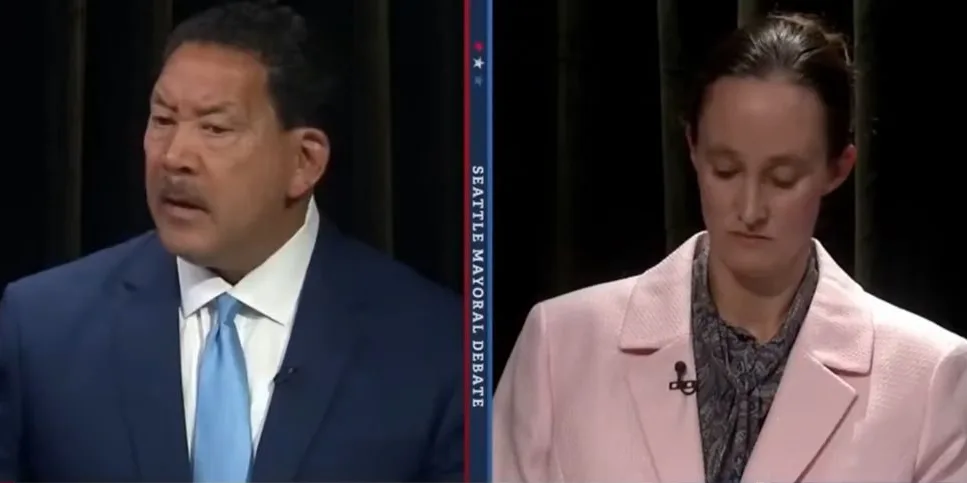
Seattle Mayor Bruce Harrell made a stunning admission during a mayoral debate with Katie Wilson over the weekend: more than 70% of the people experiencing homelessness in Seattle are not originally from the city.
Harrell made the statement while defending his administration’s record, bragging that he and his wife have “been working on the issue for a long time.” But the data show the problem has only grown worse during his years in power.
WATCH: My reaction to Mayor Bruce Harrell admitting that 70% of Seattle's homeless "come from elsewhere." He also admits to working on this "for a long time."
How is that going for you Mayor Harrell?
Homelessness jumped 39% while he was on council & 26% while he was mayor pic.twitter.com/UZyW2z0Cgb
— Ari Hoffman 🎗 (@thehoffather) October 5, 2025
Homelessness Has Exploded During Harrell’s Tenure
When Harrell first entered public office as a Seattle City Councilmember in 2008, there were roughly 8,400 people experiencing homelessness in King County. By the time he left the council in 2020, that number had risen to nearly 11,800 — a 39% increase.
As mayor, the trend has continued sharply upward. In 2022, the official Point-in-Time count found 13,368 people experiencing homelessness. By 2024, that figure surged to 16,868 — a 26% increase during Harrell’s time in the mayor’s office.
In total, Seattle’s homeless population has doubled since Harrell first took office. And despite the city declaring a homelessness “state of emergency” back in 2015, the crisis has only deepened.
Majority Are From Outside Seattle
Earlier this year, new data revealed that half of the people experiencing homelessness in Seattle first became homeless outside the region and have no direct connection to the city or surrounding area.
The Discovery Institute’s Center on Wealth and Poverty highlighted this in its New Approach to Homelessness in Seattle report, which ranked Seattle’s homelessness crisis as the third worst in the nation. According to the report, unsheltered homelessness in King County is at an all-time high and on pace to double in less than three years if trends continue.
“In addition to the tragic negative impact on the lives of those experiencing homelessness, the crisis also impacts the safety and livability of the surrounding community,” the report noted.
The study pointed to three key policy failures driving the crisis:
- Halting treatment requirements,
- Redistributing funds away from emergency response toward permanent supportive housing, and
- Using a one-size-fits-all approach for different populations with unique needs.
Substance Abuse and Mental Health Untreated
The report cited research from UC Berkeley and UCLA showing that 75% of people experiencing unsheltered homelessness self-report a substance use disorder or untreated mental illness, and nearly half say those issues directly contributed to losing their housing.
Because federal “Housing First” policies prohibit combining homelessness funding with treatment or training requirements, major service gaps have opened up in addressing addiction and mental illness.
The impact is deadly. In 2023, 49% of overdose deaths in King County were among people living unsheltered or in subsidized housing. A July 2024 audit found a 282% increase in overdose deaths inside Seattle’s permanent supportive housing between 2020 and 2023.
A Crisis Decades in the Making
King County now has an estimated 16,385 people experiencing homelessness, a 23% jump since 2022. Homelessness here has grown every year since 2019, far outpacing national trends. While the national unsheltered population has grown by 12%, King County’s has grown by 28%, putting it on track to double to nearly 19,620 unsheltered individuals within three years.
Critics argue Seattle’s permissive policies, lack of treatment requirements, and generous services have effectively turned the city into a magnet for homelessness migration.




